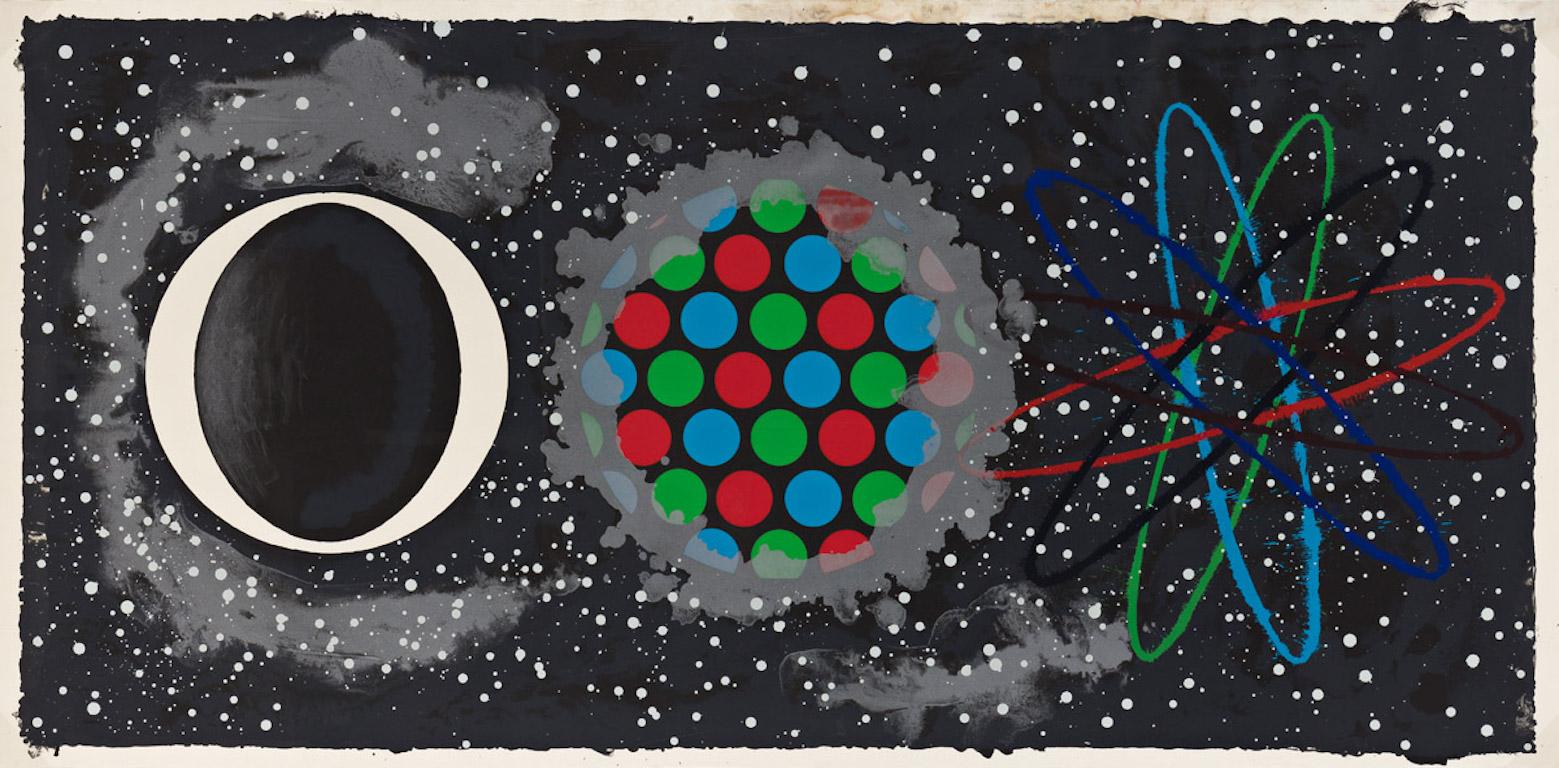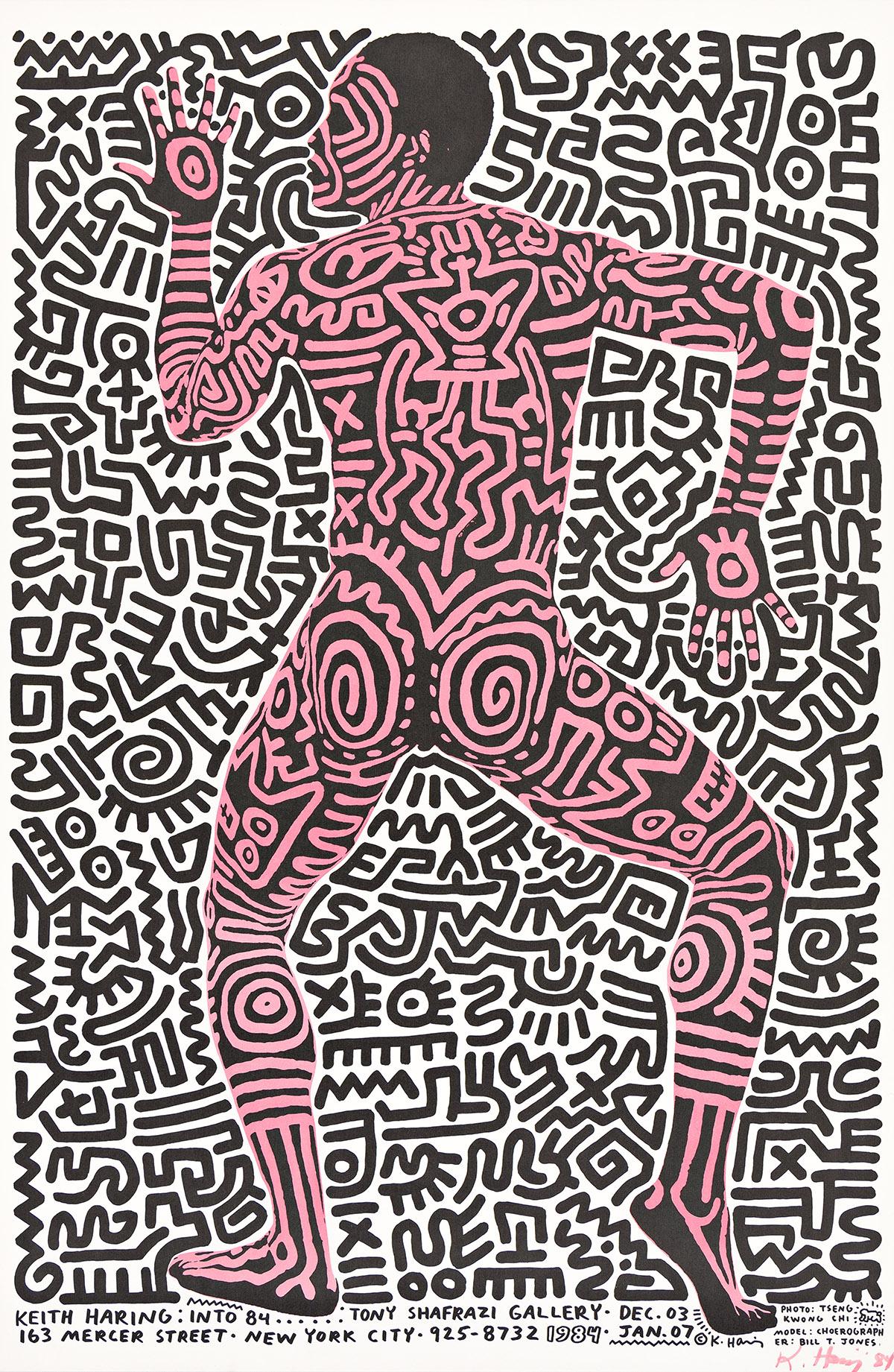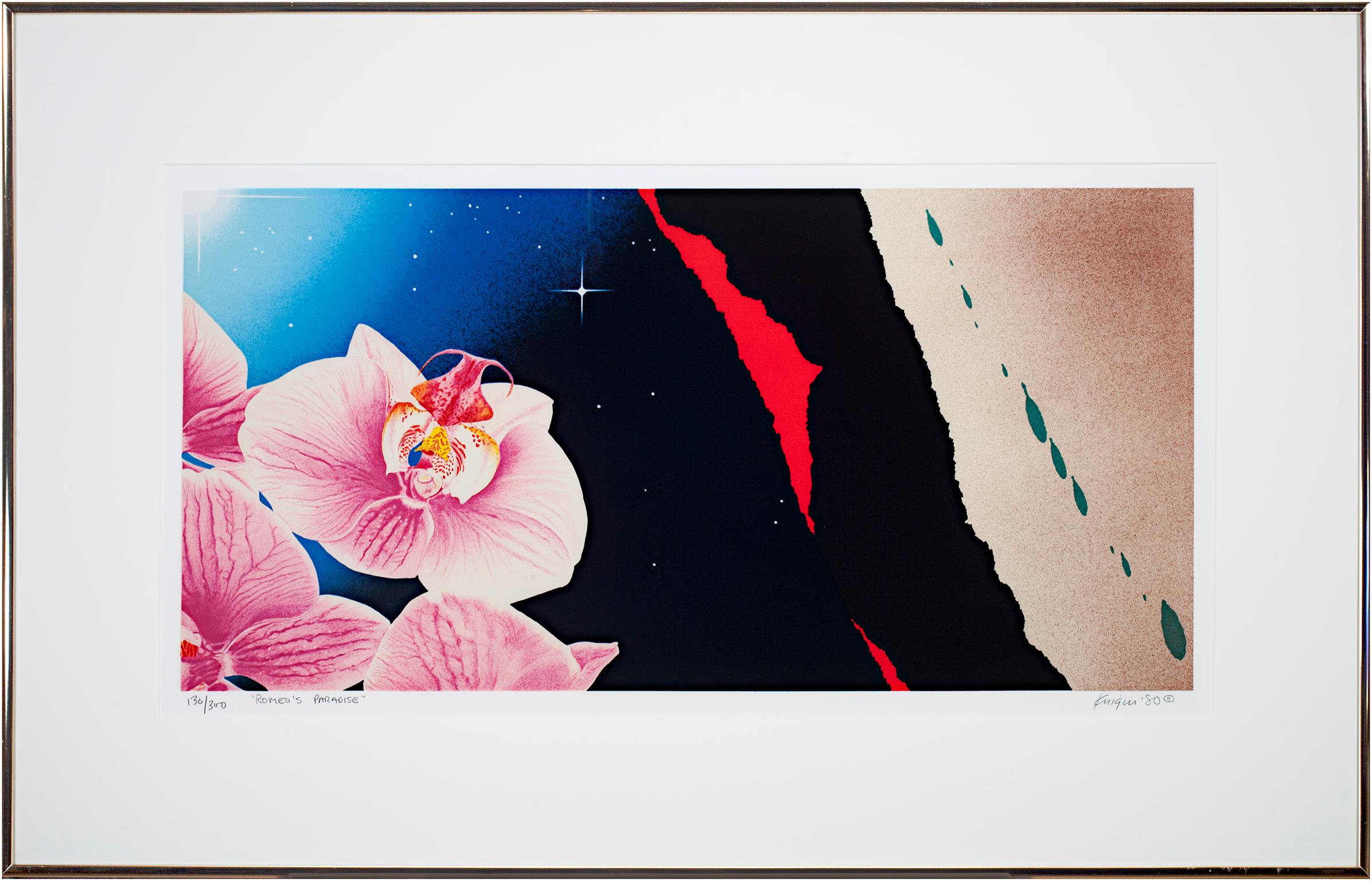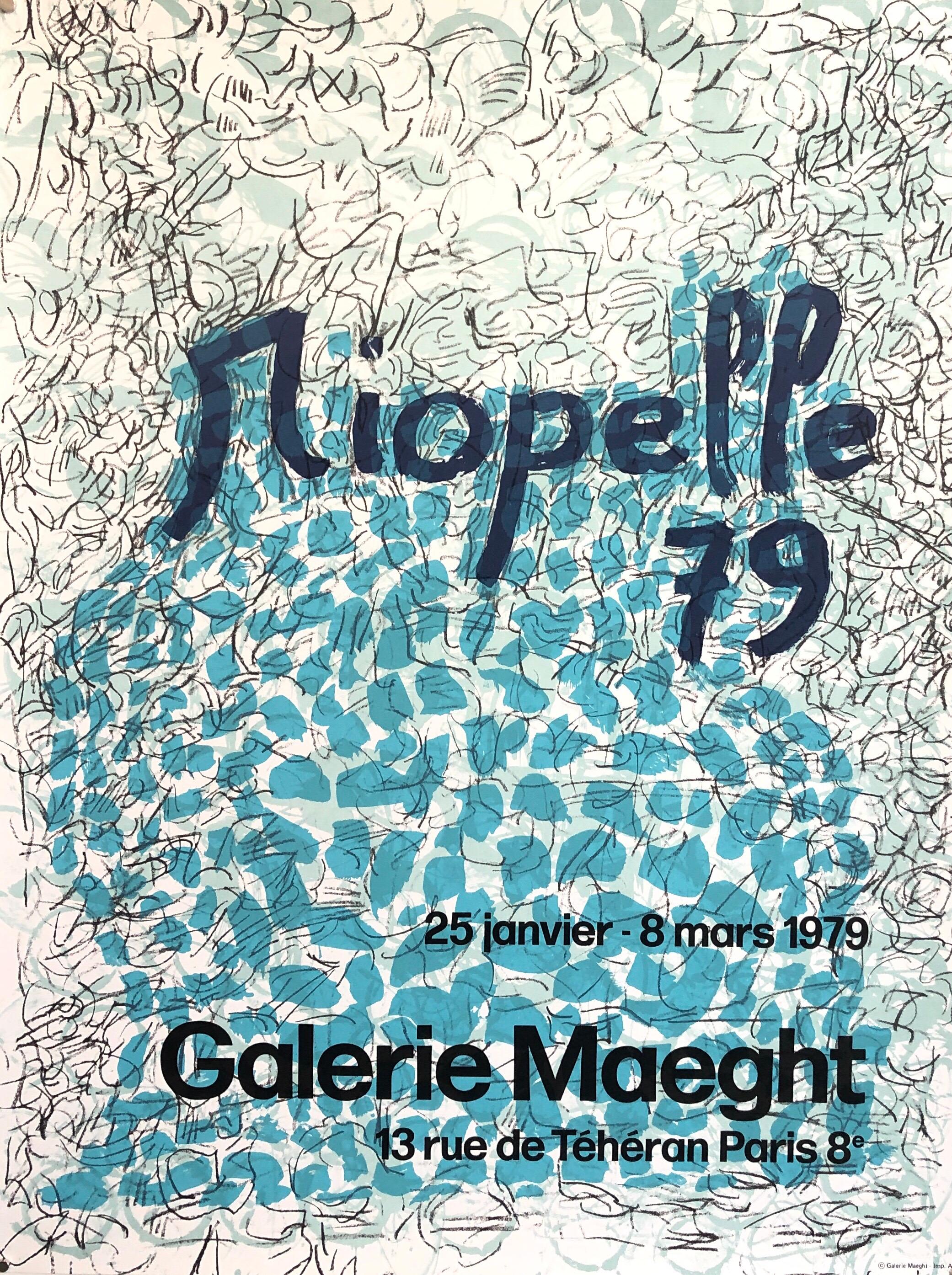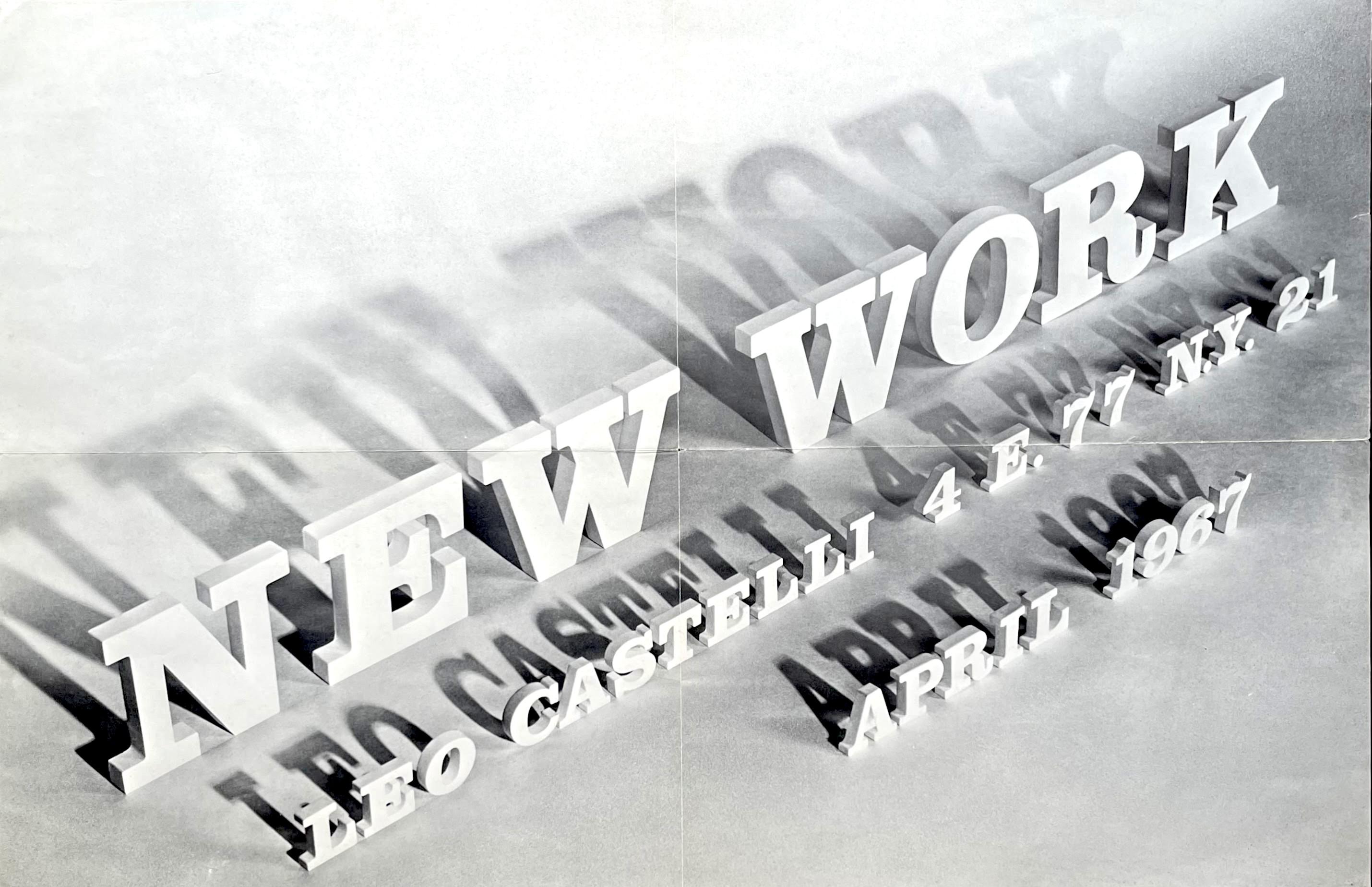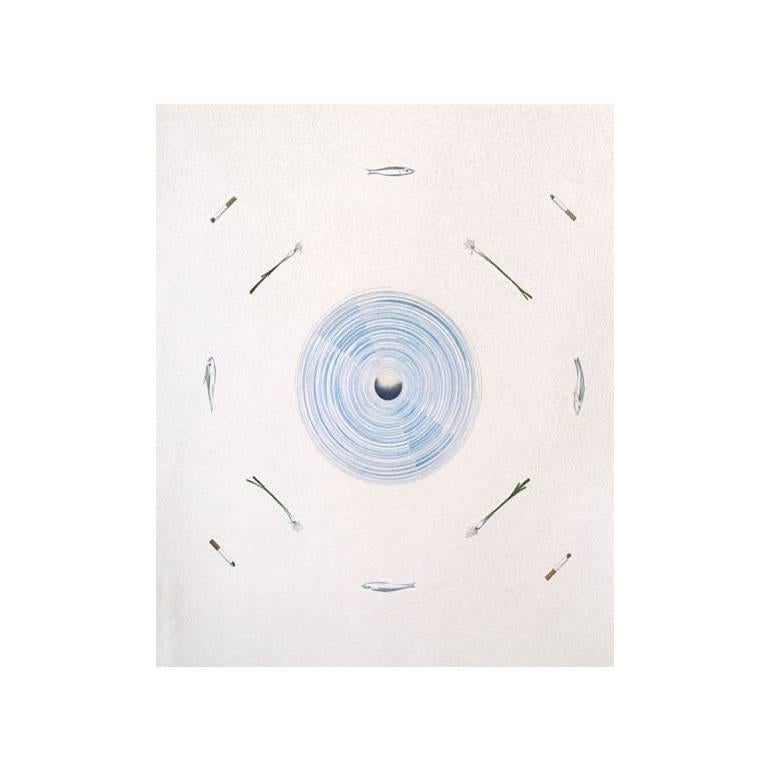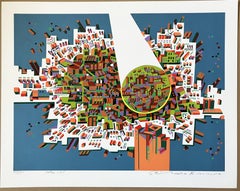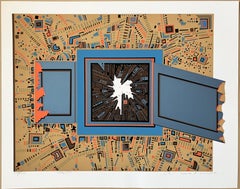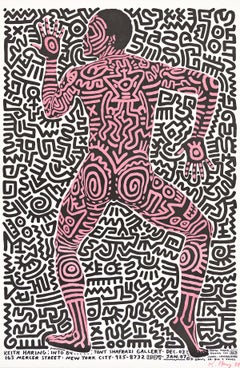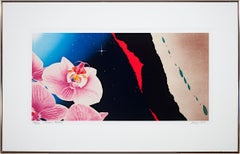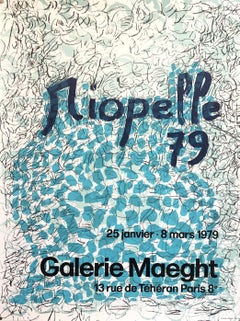Items Similar to Allied Chemical Tower, Packed, Project for Number 1 Time Square New York
Want more images or videos?
Request additional images or videos from the seller
1 of 13
Christo JavacheffAllied Chemical Tower, Packed, Project for Number 1 Time Square New York1971
1971
About the Item
This artwork titled ' Allied Chemical Tower, Packed, Project for Number 1 Time Square, New York" 1971, in an original color lithograph on Arjomari paper by renown Bulgarian/American artist Christo Javacheff, 1935-2020. It is hand signed and numbered 48/100 in pencil by the artist. Published by Landfall Press, Chicago and printed by Jack Lemon, Jerry Radiger and Don Holman. The artwork size is 27.75 x 21.75 inches, framed size is 42.75 x 35.5 inches. It come with a hand written letter addressed to the previous owner by Jeanne Claude Christo, the wife of the artist, and the envelope related to it, see picture #8 and #9. Custom framed in a wooden black frame, with off-white matting and black color bevel. It is in excellent condition, the frame has some minor scratches and will be replaced by a similar or better wooden black frame when sold, before shipping. This will bring the over all condition to excellent.
About the artist:
Christo Vladimirov Javacheff (Bulgarian: Христо Владимиров Явашев) was born on June 13, 1935, in Gabrovo, Bulgaria, as the second of three sons to Tzveta Dimitrova and Vladimir Javacheff, who worked at a textile manufacturer. Christo was shy and had a predilection for art. He received private art instruction at a young age through the support of his parents, who invited visiting artists to their house.
Christo was particularly affected by events from World War II and his country's fluid borders. During evacuations, he and his brothers stayed with a family in the rural hills outside town, where Christo connected with nature and handicraft.
Young Christo
While Bulgaria was under repressive totalitarian rule, and Western art was suppressed, Christo pursued realistic painting through the mid-1950s. He was admitted into the Sofia Academy of Fine Arts in 1953, but found the school dull and stifling. Instead, he found inspiration in Skira art books, and visiting Russian professors who had been active in Russian modernism and the Soviet avant-garde. On the weekends, academy students were sent to paint propaganda and Christo unhappily participated.
He found work as a location scout for the state cinema and served three tours of duty during summer breaks. In 1956, he used an academy connection to receive permission to visit family in Prague, where the theater of Emil František Burian reinvigorated him. Amid fears of further Russian suppression in Hungary, Christo decided to flee to Vienna as a railcar stowaway. He had little money after paying the bribe, did not speak the language, had deserted during his Bulgarian military service, and feared being trapped in a refugee camp.
In Vienna, he stayed with a family friend (who had not expected him), studied at the Vienna Fine Arts Academy, and surrendered his passport to seek political asylum as a stateless person. There, he supported himself with commissions and briefly visited Italy with the academy, whose program he was equally unhappy with. At the behest of a friend relocated from Sofia, he saved up to visit Geneva in late 1957. In violation of his visa, he continued to pursue commissions (whose works he would sign with his family name, reserving his given name for more serious work) and was transformed after visiting the Kunstmuseum Basel and Kunsthaus Zürich. In January 1958, he first began to wrap items, starting with a paint can. In February 1958, Christo left for Paris, having received a visa with the assistance of a Sofia academy connection.
In 1973, after 17 stateless years, Christo became a United States citizen. He died at his home in New York City on May 31, 2020, at 84. The work of Christo Javacheff is held in major private, corporate collections and museums worldwide.
- Creator:Christo Javacheff (1935 - 2020, Bulgarian)
- Creation Year:1971
- Dimensions:Height: 42.75 in (108.59 cm)Width: 35.5 in (90.17 cm)Depth: 1.25 in (3.18 cm)
- Medium:
- Movement & Style:
- Period:
- Condition:
- Gallery Location:San Francisco, CA
- Reference Number:Seller: chri/all/tow/011stDibs: LU666314073832
About the Seller
5.0
Platinum Seller
Premium sellers with a 4.7+ rating and 24-hour response times
Established in 1999
1stDibs seller since 2017
781 sales on 1stDibs
Typical response time: 2 hours
- ShippingRetrieving quote...Shipping from: San Francisco, CA
- Return Policy
Authenticity Guarantee
In the unlikely event there’s an issue with an item’s authenticity, contact us within 1 year for a full refund. DetailsMoney-Back Guarantee
If your item is not as described, is damaged in transit, or does not arrive, contact us within 7 days for a full refund. Details24-Hour Cancellation
You have a 24-hour grace period in which to reconsider your purchase, with no questions asked.Vetted Professional Sellers
Our world-class sellers must adhere to strict standards for service and quality, maintaining the integrity of our listings.Price-Match Guarantee
If you find that a seller listed the same item for a lower price elsewhere, we’ll match it.Trusted Global Delivery
Our best-in-class carrier network provides specialized shipping options worldwide, including custom delivery.More From This Seller
View All"Wrapped Statues, Aegina Temple" Large screen print with collage.
Located in San Francisco, CA
This artwork titled "Wrapped Statues, Aegina Temple, Project for the Munich Glyptotek" from the "Official Arts Portfolio of the XXIV Olympic" 1988, is ...
Category
Late 20th Century Pop Art Abstract Prints
Materials
Screen
Em Qualquer Canto (Anywhere) The complete portfolio of 13 engravings
Located in San Francisco, CA
This portfolio titled "Em Qualquer Canto (Anywhere)" by Brazilian artist Marcio Perigo, b. 1949 is composed of 13 original engravings on German paper, all hand signed, numbered 4/20 ...
Category
Late 20th Century Abstract Expressionist Abstract Prints
Materials
Engraving
City 381
By Risaburo Kimura
Located in San Francisco, CA
Artist: Risaburo Kimura– Japanese/American (1924-2014 )
Title: City 381
Year: circa 1972
Medium: Serigraph
Sight size: 19.25 x 25.5 inches.
Sheet size: 22.75 x 28.75 inches.
Signat...
Category
1970s Abstract Geometric Abstract Prints
Materials
Paper, Screen
City 358
By Risaburo Kimura
Located in San Francisco, CA
Artist: Risaburo Kimura– Japanese/American (1924-2014 )
Title: City 358
Year: circa 1972
Medium: Serigraph
Sight size: 19.25 x 25.75 inches.
Sheet size: 22.75 x 28.75 inches.
Signa...
Category
1970s Abstract Geometric Abstract Prints
Materials
Paper, Screen
City 365
By Risaburo Kimura
Located in San Francisco, CA
Artist: Risaburo Kimura– Japanese/American (1924-2014 )
Title: City 365
Year: circa 1972
Medium: Serigraph
Sight size: 25 x 19.75 inches.
Sheet size: 28.75 x 22.75 inches.
Signatur...
Category
1970s Abstract Geometric Abstract Prints
Materials
Paper, Screen
City 368
By Risaburo Kimura
Located in San Francisco, CA
Artist: Risaburo Kimura– Japanese/American (1924-2014 )
Title: City 368
Year: circa 1972
Medium: Serigraph
Sight size: 25 x 19.75 inches.
Sheet size: 28.75 x 22.75 inches.
Signatur...
Category
1970s Abstract Geometric Abstract Prints
Materials
Paper, Screen
You May Also Like
Coin Noir
By James Rosenquist
Located in New York, NY
A very good impression of this large color lithograph on white Arches cover paper. Signed and numbered 16/100 in pencil, and titled in pencil within the image. Printed by Styria Stud...
Category
1970s Pop Art Abstract Prints
Materials
Lithograph, Color
Keith Haring: Into 1984/Tony Shafrazi Gallery
By Keith Haring
Located in New York, NY
Color offset lithograph. Signed and dated in felt-tip pen and pink ink, lower right. Published by Tony Shafrazi Gallery, New York.
Category
1980s Pop Art Abstract Prints
Materials
Color, Lithograph, Offset
Original Lithograph Signed Pop Art Floral Abstract Galaxy Space Celestial Bright
By Michael Knigin
Located in Milwaukee, WI
"Romeo's Paradise" is an original color lithograph by Michael Knigin. The artist signed the piece in the lower right then titled/editioned 130/300 in the lower left with graphite. It...
Category
1980s Pop Art More Prints
Materials
Lithograph, Ink
Canadian Post Modern Pop Art Lithograph Vintage Poster Memphis Galerie Maeght
By Jean-Paul Riopelle
Located in Surfside, FL
Vintage gallery exhibition poster.
The Galerie Maeght is a gallery of modern art in Paris, France, and Barcelona, Catalonia, Spain. The gallery was founded in 1936 in Cannes. The Paris gallery was started in 1946 by Aimé Maeght. The artists exhibited are mainly from France and Spain. Since 1945, the gallery has presented the greatest modern artists such as Matisse, Bonnard, Braque, Miró, and Calder. In 1956, Adrien Maeght opened a new parisian venue. The second generation of “Maeght” artists was born: Bazaine, Andre Derain, Giacometti, Kelly, Raoul Ubac, then Riopelle, Antoni Tapies, Pol Bury and Adami, among others.
Jean-Paul Riopelle, CC GOQ (7 October 1923 – 12 March 2002) was a painter and sculptor from Quebec, Canada. He became the first Canadian painter (since James Wilson Morrice) to attain widespread international recognition.
Born in Montreal, Riopelle began drawing lessons in 1933 and continued through 1938. He studied engineering, architecture and photography at the école polytechnique in 1941. In 1942 he enrolled at the École des beaux-arts de Montréal but shifted his studies to the less academic école du Meuble, graduating in 1945.
He studied under Paul-Émile Borduas in the 1940s and was a member of Les Automatistes movement. Breaking with traditional conventions in 1945 after reading André Breton's Le Surréalisme et la Peinture, he began experimenting with non-objective (or non-representational) painting. He was one of the signers of the Refus global manifesto. In 1947 Riopelle moved to Paris and continued his career as an artist, where, after a brief association with the surrealists (he was the only Canadian to exhibit with them) he capitalized on his image as a "wild Canadian". His first solo exhibition took place in 1949 at the Surrealist meeting place, Galerie La Dragonne in Paris. Riopelle married Françoise Lespérance in 1946; the couple had two daughters but separated in 1953. In 1959 he began a relationship with the American painter Joan Mitchell, Living together throughout the 1960s, they kept separate homes and studios near Giverny, where Monet had lived. They influenced one another greatly, as much intellectually as artistically, but their relationship was a stormy one, fueled by alcohol. The relationship ended in 1979. His 1992 painting Hommage à Rosa Luxemburg is Riopelle's tribute to Mitchell, who died that year, and is regarded as a high point of his later work.
Riopelle's style in the 1940s changed quickly from Surrealism to Lyrical Abstraction (related to abstract expressionism), in which he used myriad tumultuous cubes and triangles of multicolored elements, facetted with a palette knife, spatula, or trowel, on often large canvases to create powerful atmospheres. The presence of long filaments of paint in his painting from 1948 through the early 1950s[8] has often been seen as resulting from a dripping technique like that of Jackson Pollock. Rather, the creation of such effects came from the act of throwing, with a palette knife or brush, large quantities of paint onto the stretched canvas.
Riopelle's voluminous impasto became just as important as color. His oil painting technique allowed him to paint thick layers, producing peaks and troughs as copious amounts of paint were applied to the surface of the canvas. Riopelle, though, claimed that the heavy impasto was unintentional: "When I begin a painting," he said, "I always hope to complete it in a few strokes, starting with the first colours I daub down anywhere and anyhow. But it never works, so I add more, without realizing it. I have never wanted to paint thickly, paint tubes are much too expensive. But one way or another, the painting has to be done. When I learn how to paint better, I will paint less thickly."
When Riopelle started painting, he would attempt to finish the work in one session, preparing all the color he needed before hand: "I would even go as far to say—obviously I don't use a palette, but the idea of a palette or a selection of colors that is not mine makes me uncomfortable, because when I work, I can't waste my time searching for them. It has to work right away."
A third element, range of gloss, in addition to color and volume, plays a crucial role in Riopelle's oil paintings. Paints are juxtaposed so that light is reflected off the surface not just in different directions but with varying intensity, depending on the naturally occurring gloss finish (he did not varnish his paintings). These three elements; color, volume, and range of gloss, would form the basis of his oil painting technique throughout his long and prolific career.
Riopelle received an Honorable Mention at the 1952 São Paulo Art Biennial. In 1953 he showed at the Younger European Painters exhibition at the Solomon R. Guggenheim Museum in New York City. The following year Riopelle began exhibiting at the Pierre Matisse Gallery in New York. In 1954, works by Riopelle, along with those of B. C. Binning and Paul-Émile Borduas represented Canada at the Venice Biennale. He was the sole artist representing Canada at the 1962 Venice Biennale in an exhibit curated by Charles Comfort...
Category
1970s Pop Art Abstract Prints
Materials
Lithograph, Offset
Leo Castelli Gallery poster (Roy Lichtenstein, Frank Stella, John Chamberlain)
Located in New York, NY
Rare collectors item:
Roy Lichtenstein, Frank Stella, John Chamberlain
New Work, Leo Castelli poster, 1967
Offset lithograph poster invitation with original folds, addressee and post...
Category
1960s Pop Art Abstract Prints
Materials
Lithograph, Offset
The Fan and its Surroundings, from the Global Editions Series
By Ed Ruscha
Located in London, GB
Lithograph on Rives BFK paper, torn and deckle edges
Category
Late 20th Century Pop Art Abstract Prints
Materials
Lithograph
Recently Viewed
View AllMore Ways To Browse
Project Support
Arsham Bronze
Astro Boy Vintage
Aubrey Beardsley Salome
Audean Johnson
Aztec Sculpture Mosaic
Bagni Di Lucca
Balloon Dog Plate Blue
Balthazar Korab
Banksy Di Faced
Banksy Flower Thrower
Banksy Sale Ends
Banksy Tesco
Barbara Lekberg Sculpture
Barnegat Light
Baston Vintage
Bear Sahara Novotny
Bearbrick Van Gogh
